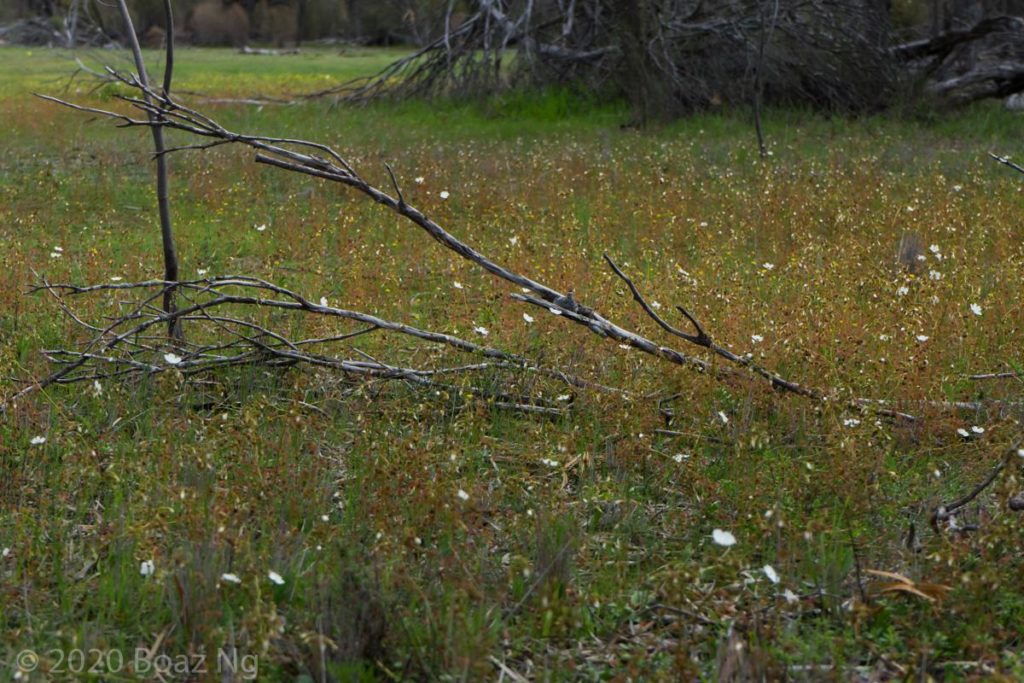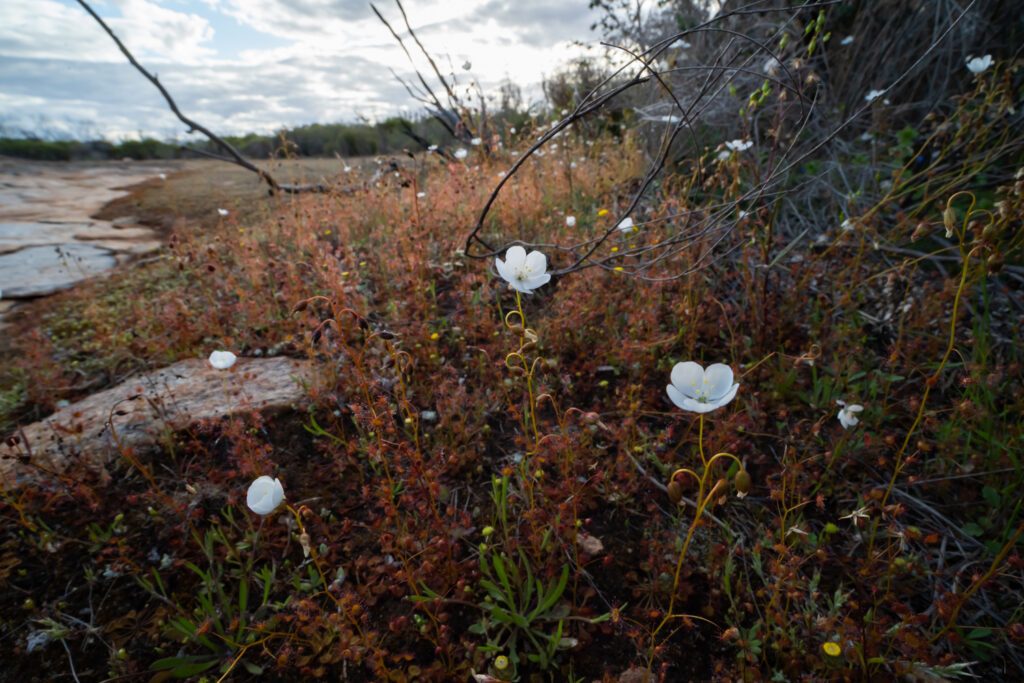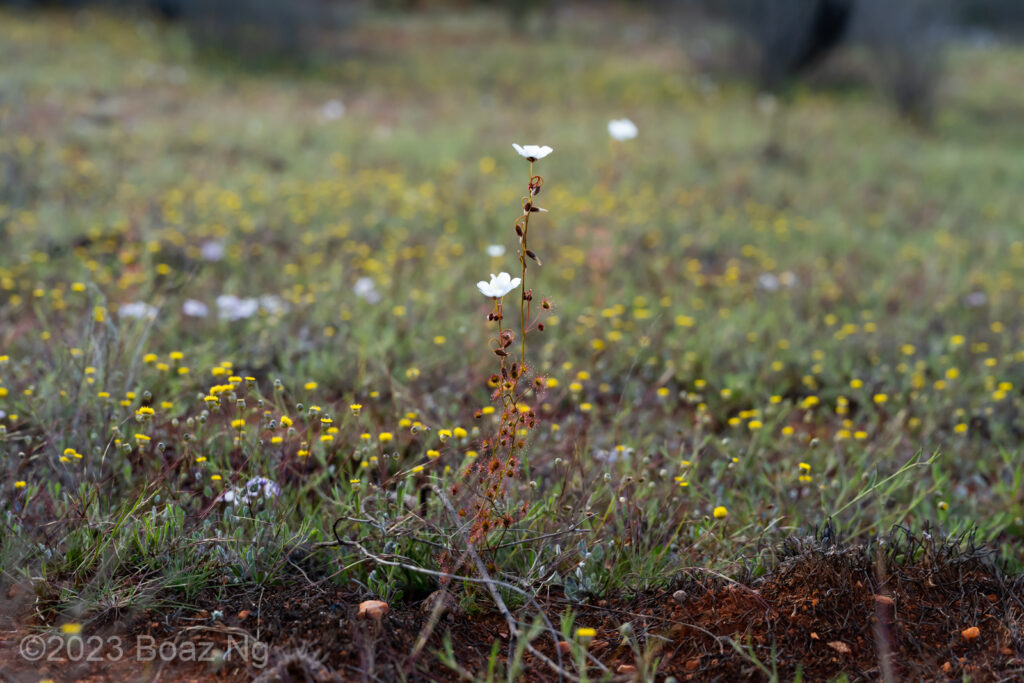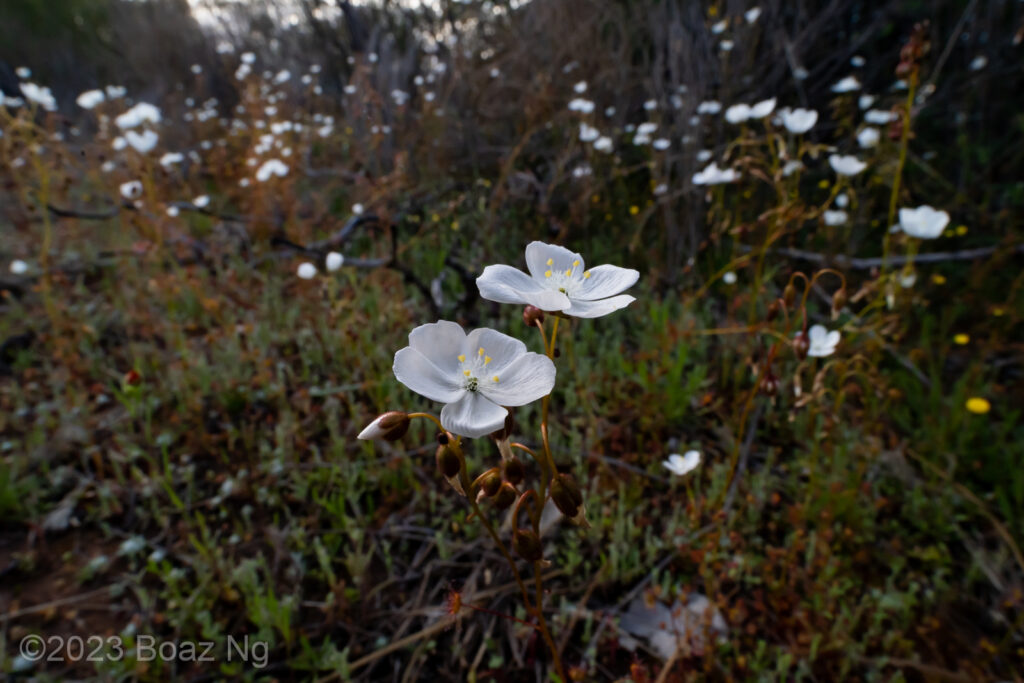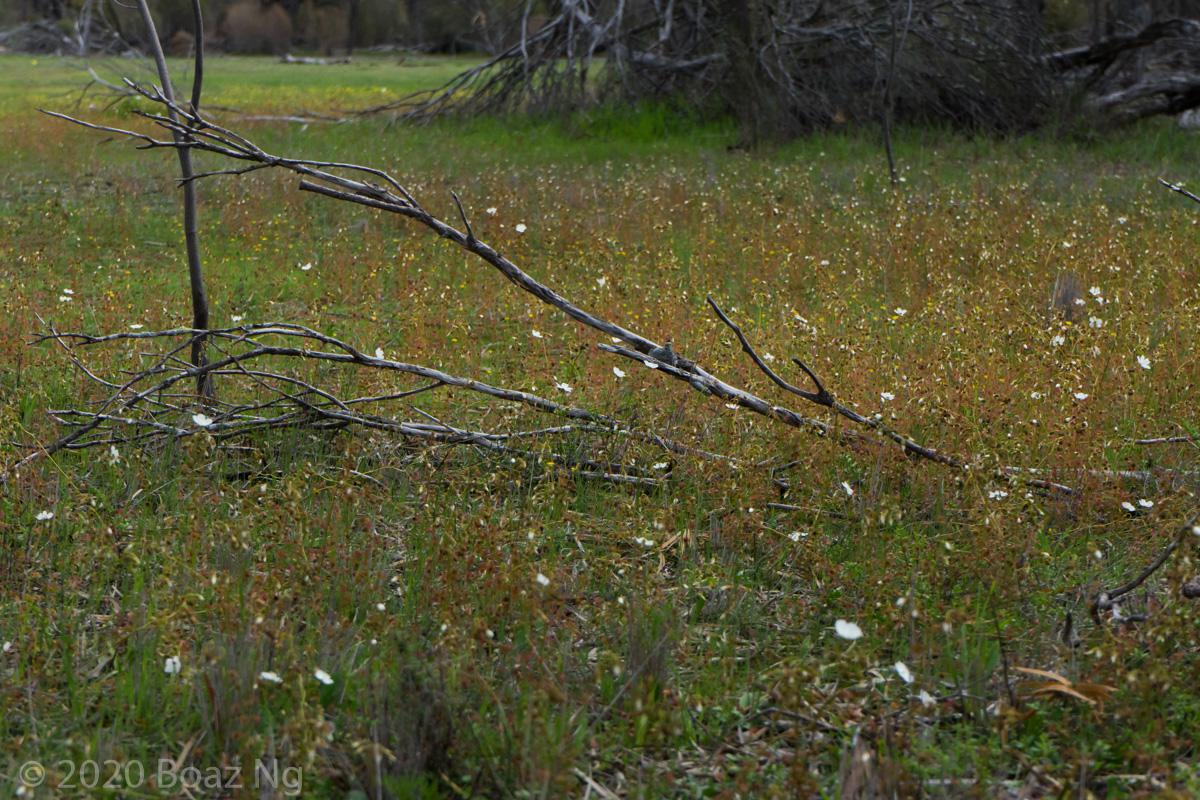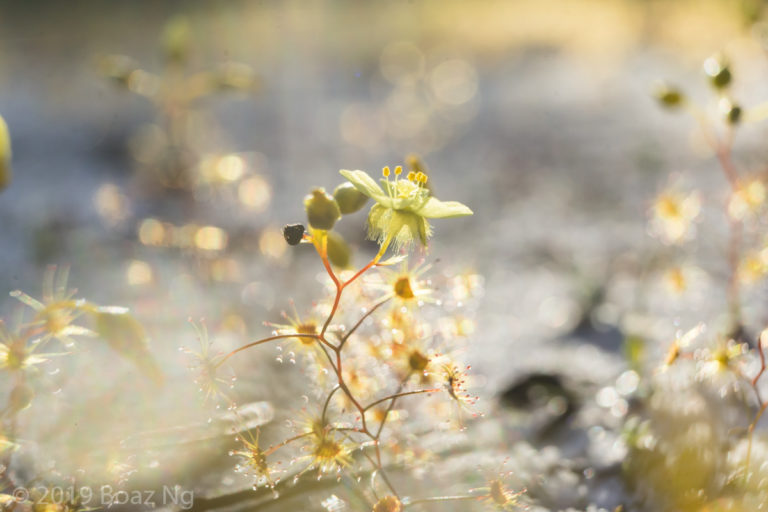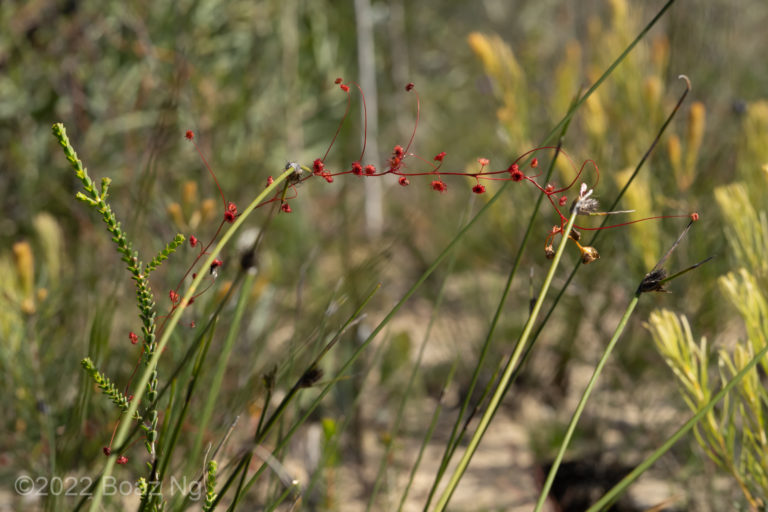Drosera andersoniana grows in the interior Wheatbelt Region of Western Australia and is associated with the many granite outcrops which dot the landscape. The erect species always has a strong basal rosette, out of which emerges a stem of up to 35 cm tall. The species can be distinguished from its relatives by the thin petioles of the upper leaves and the presence of small glands which cover the surface of the stem. The flowers are white or pink. Like make species of the granite outcrops, it can grow in impressive numbers and cover entire fields.
In the absence of the erect stem, the species may be confused with the somewhat similar Drosera yilgarnensis, which also shares its range. Drosera andersoniana can be distinguished by its reniform basal leaves in this case (as opposed to the crescentic cauline lamina of D. yilgarnensis).


